“OK, Group 4 now on deck!”
So many people wanted to be part of the announcement ceremony for the first tenant at the Southern Virginia Megasite in Pittsylvania County that the photos had to be done in shifts. Before the event began, one of the organizers went around passing out cards to identify who was in which group.
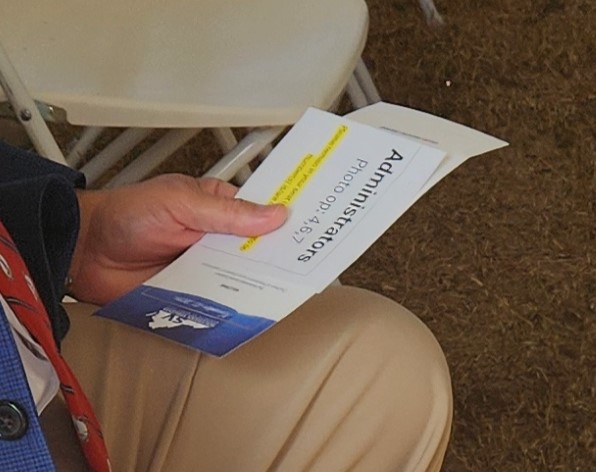
“This is the day we have dreamed of,” said Pittsylvania County Supervisor Vic Ingram.
It is difficult to understate the importance of Wednesday’s announcement that Microporous, a Tennessee-based company, would locate a battery separator plant at the Southern Virginia site. The scale of the operation — the company has pledged to create 2,015 jobs by the time it opens in 2026 — dwarfs anything seen in this part of the state in recent times. Charles Major, a retired banker from Danville, said the biggest announcement in the region predates him — the arrival of the Goodyear tire manufacturing plant in 1966. (See the story by Cardinal’s Grace Mamon for more details.)
Beyond the sheer job count, though, the announcement provides a very big punctuation mark to the region’s economic transformation, a point that one speaker after another emphasized. Danville, Pittsylvania County and, indeed, many of the localities along the state’s southern border with North Carolina, went through three economic traumas that all hit at about the same time a quarter-century ago: The tobacco industry withered as people started heeding health advice not to smoke. Then textiles and furniture manufacturing collapsed as those jobs went overseas. That’s the Danville that many people not familiar with the region remember in their collective memory. What they’ve missed is the slow, patient, and often frustrating but eventually successful attempt to build a new economy around advanced manufacturing. Microporous isn’t the start of something and, ideally, not the culmination, either. Rather, it’s a validation of what the region has been doing — a very big validation. “This is the first domino to fall in what will be a renaissance of Southern Virginia as a hub of advanced manufacturing,” said Del. Eric Phillips, R-Henry County, whose district encompasses the 3,528-acre site (of which Microporous, for all the attention it’s getting, will only take 212).
Here are some of the other ways this announcement matters — and some implications that Microporous will have, even beyond the borders of Pittsylvania County.
1. Microporous appears to be a better deal than the Ford plant that Gov. Glenn Youngkin nixed
The Southern Virginia site was in contention — and possibly the preferred site — for a Ford electric vehicle battery plant. In December 2022, Youngkin withdrew the state’s bid for the project on the grounds that Ford has a partnership with a Chinese company that some see as tied to that country’s communist government. Virginia Democrats howled that Youngkin was costing a rural area much-needed jobs. I heard privately from some Republicans who weren’t very happy, either. Ford instead went to Michigan where Gov. Gretchen Whitmer was happy to claim it.
Let’s look at how things have worked out: The electric vehicle market has softened. The Ford plant was originally envisioned to have 2,500 workers, but now that number has dropped to 1,700. Microporous has committed to 2,015 jobs.
The Michigan news site Mlive reports that the jobs at the Blue Oval plant in Marshall, Michigan are projected to average $52,416 per year. The paperwork filed with the Microporous project says the jobs there will average “at least $58,090” per year.
Microporous will also take less of the Megasite than Ford would have — 212 acres vs. the 730 acres Ford originally took in Michigan, since scaled back to 500 acres. That leaves the opportunity for more tenants at the Megasite.
2. Youngkin gets a big political (and economic) win
By turning away Ford, Youngkin gambled and won. He took a short-term political loss and comes out with a legacy-cementing economic development announcement that, as the math above shows, seems better to the tune of 300 more jobs — and higher-paying ones, at that.
He also gets to claim credit for something he couldn’t have with Ford: “This is an American company using American technology selling into an American supply chain,” he said. “It is the bookend to the Ford decision. Can you imagine — they’ve had so many problems with that — they’d have tied up this site and we’d have never had this discussion — it’s a quagmire.” (Ford has had problems in Michigan; at one point pausing the project, but construction is now underway and the scaled-down plant is set to open in 2026, the same year as Microporous in Virginia).
Without Microporous, the Ford decision would have gone onto Youngkin’s record, probaby on the minus side for those more concerned with the missed opportunity for jobs than any concerns about Chinese technology. With Microporous, Youngkin gets an undisputed talking point on the plus side.
3. Virginia finally breaks into the Battery Belt
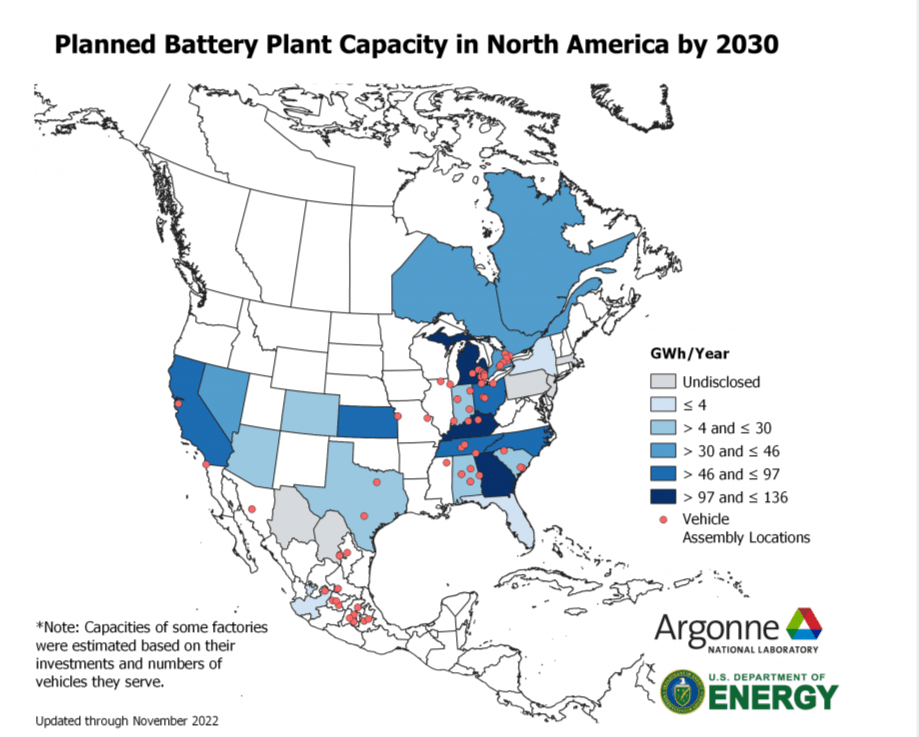
Over the past decade, we’ve seen the rise of a so-called “Battery Belt” of companies doing some kind of work related to batteries, many for electric vehicles, many for other products. Some of these have been in the traditional automotive states — Michigan, along with Indiana and Ohio — but the biggest center has been in the Southeast. Georgia has been the epicenter, creating twice as many battery-related jobs as Michigan, with other battery companies in the Carolinas, Tennessee and Kentucky.
All these companies have passed over Virginia and, after a while, that becomes noticeable. The Pittsylvania site has been the runner-up for many of them, but runners-up don’t get any kind of consolation prize. As Danville city council member Lee Vogler put it: “We’ve been the bridesmaid so many times and this time we’re finally the bride.” 
Being able to claim even a small part of the Battery Belt is important because it associates Virginia with a fast-growing economic sector — and sets up the state to develop supply chain jobs. Secretary of Commerce and Trade Caren Merrick told Microporous CEO John Reeves “we want to work with you on reshoring your supply chain.” This isn’t just a political point; it’s a big economic one. Georgia has 6,000 jobs in actual battery manufacturing, according to the office of Gov Brian Kemp, but 22,000 more in the supply chain. If that same math plays out here, the 2,015-job Microporous announcement would over time create another 7,375 jobs. Besides any jobs directed related to the company’s supply chain, the Microporous CEO said his facility would need lots of local services. “We have a lot of machining,” he said, “so we need a lot of maintenance and a lot of packaging.” He said the facility would probably require eight truckloads in and out every day — and 40 forklifts. “So that’s a lot of maintenance and servicing,” he said.
4. The announcement is a vindication for all those who have backed the Megasite over the years
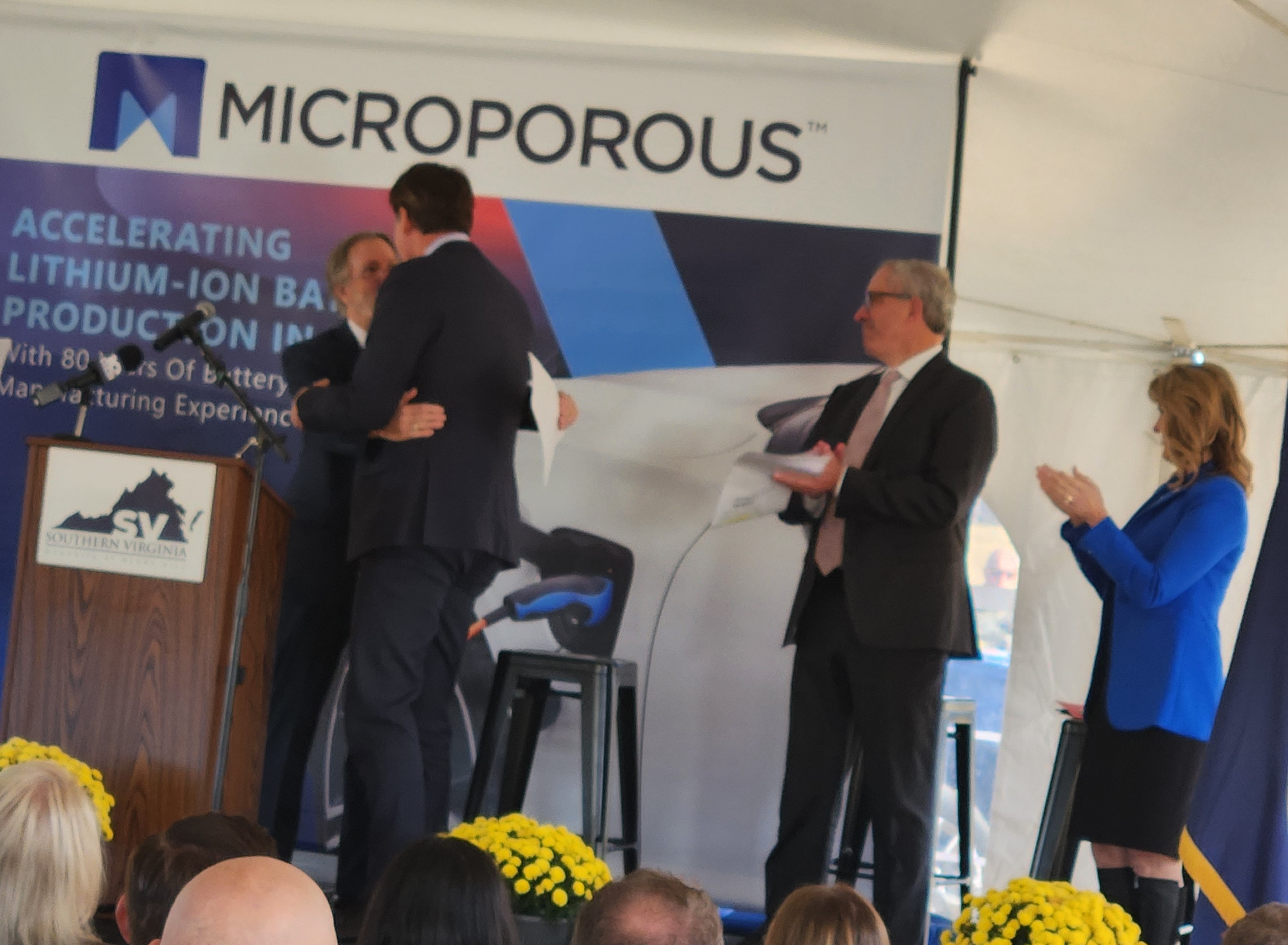
The site was purchased in 2008. It was ungraded for 10 years before there was money to start grading in 2018. That’s 16 years during which the land just sat there, with nothing on it — and 16 years in which there was often local criticism that the project was a waste of money. Many speakers alluded to this Wednesday. “Despite the naysayers ..,” said Pittsylvania County Supervisors Chairman Darrell Dalton. Fellow supervisor Ingram, who chairs the authority that actually owns the site, referred to “public doubt and skepticism.”
The reality is that economic development projects often take a long time. The problem is the public often isn’t patient and the patience required doesn’t necessarily fit within a single politician’s term of office.
Another lesson here: This shows what can happen when two localities work together. Several years ago, I was at a meeting of the Senate Finance Committee and state officials highlighted Danville and Pittsylvania County as two communities who have realized they are stronger as allies than as rivals. Some other communities should learn from their example.
5. The announcement is a vindication for the Pittsylvania County supervisors who approved the controversial Axton housing project
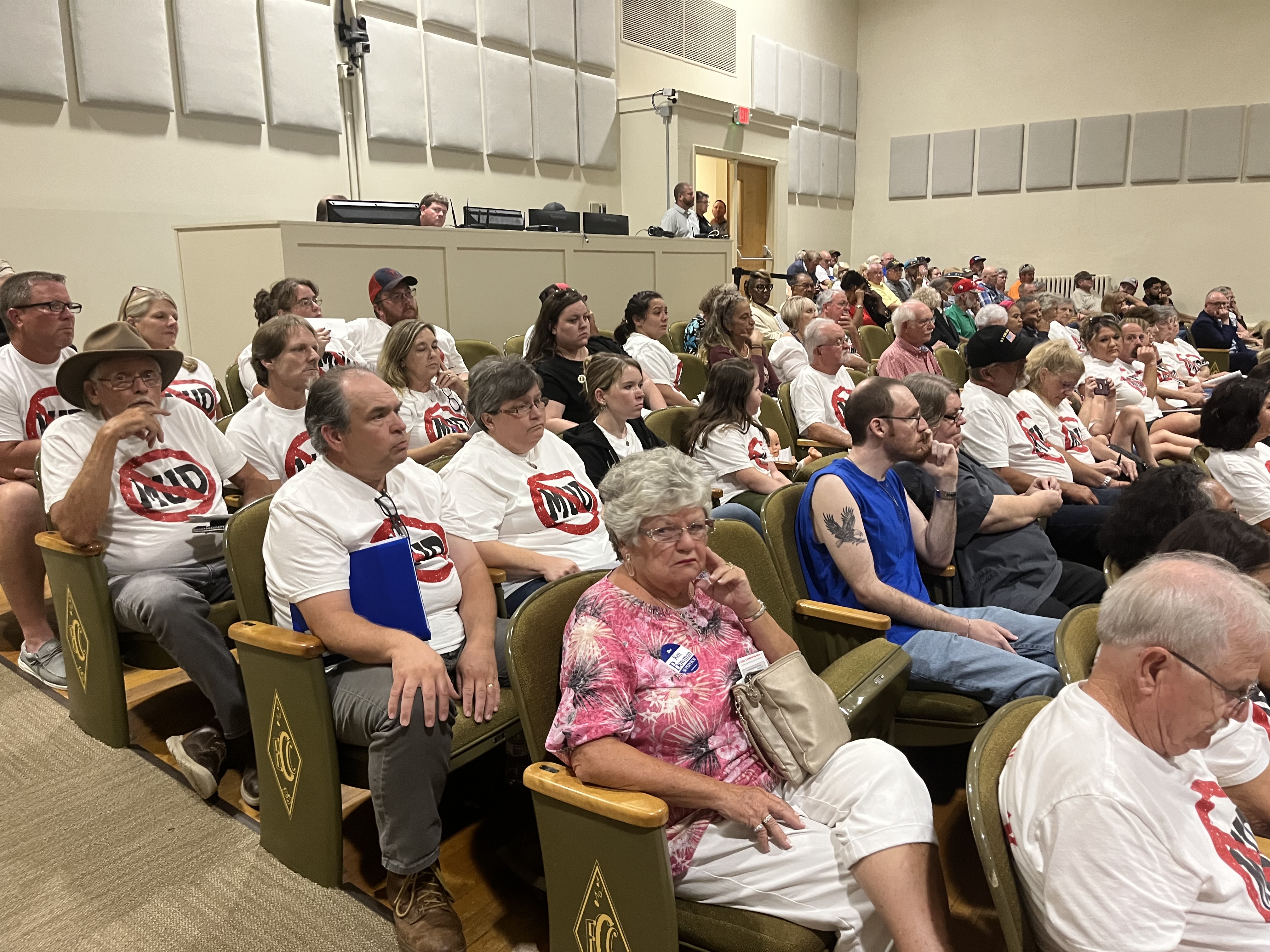
Last year Pittsylvania was roiled by opposition to a proposed 1,900-unit housing development near Axton, not far from the Megasite. Why does a county that’s losing population need so many more houses? This is why. The workers at Microporous, if they’re not already living in the region, will need somewhere to live. Even if nobody moved into the county, but Microporous helped halt its out-migration, the county would still need more housing.
The concept of a county losing population but having a housing problem is often a hard one for people to grasp but it works like this: Imagine a hypothetical town with just one house, occupied by a family of four. The two children grow up and move away, so the population falls by one half to two. One of the adults passes on, so now the population has fallen again. A new family wants to move to town but needs a house — so here’s a town where the population has fallen by 75% yet has a housing problem. If Pittsylvania wants more jobs, it has to have a place for the workers to live. That brings us to this:
6. This is an opportunity for Martinsville and Henry County
Realistically, not all these workers will live in Danville and Pittsylvania. This is an opportunity for neighboring localities that may be losing population. From 2020 to 2023, Henry County next door saw the biggest net outmigration of any rural locality in the state (the places with the most outmigration are now in Northern Virginia and Hampton Roads, something I addressed in a previous column). Henry’s proximity to the Megasite gives it an opportunity to change all that.
I also call attention to Martinsville. The downtowns in Danville, Lynchburg and Roanoke have all seen themselves emerge as population centers — and actual neighborhoods. Uptown Martinsville has seen the slowest population growth of the four. Between 2010 and 2020, Roanoke’s downtown population grew by 130%, Lynchburg’s by 78%, Danville’s by 34% but Martinsville’s by just 17% — an increase from just 60 people to 72. This seems the opportunity Martinsville has been waiting for to accelerate the revival of its downtown. If I were a property investor, I’d be snatching up buildings in Martinsville.
7. This will also put more stress on U.S. 220

U.S. 220 between Roanoke and the North Carolina is not a particularly good road. It has lots of curves and too many trucks. Now it will have more. Years ago, the proposed Interstate 73 was supposed to fix this, but there’s not enough money in the land to build that. In September, the Commonwealth Transportation Board officially took the mythical I-73 off the books. Even getting a connector road around Martinsville has proven impossible; too much money and too many environmental challenges. Landing a major employer in Pittsylvania County will draw more attention to the road problems and ramp up the urgency of dealing with them, however that turns out to be. (See this previous story by Cardinal’s Elizabeth Beyer as well as this one by Cardinal’s Dean-Paul Stephens.)
8. This is the Green New Deal in action
Nobody used that phrase Wednesday and given all the Republican politicians on stage in a conservative part of the state, no one would dare to. But that’s what this is. The philosophy behind the so-called Green New Deal is that the transition from fossil fuels to renewables can and will create jobs. That’s exactly what’s happening here; Microporous’ products go into the electric vehicle industry and the battery storage industry for storing renewable energy so it’s not quite so intermittent. Reeves even praised Youngkin for “believing in the clean energy industry.”
9. This is part of the legacy of the Biden Administration
Joe Biden wasn’t mentioned Wednesday, but there were several oblique references to the federal government. It’s the Biden administration that has devoted record sums to promoting clean energy; a $100 million grant from the Department of Energy funding that has enabled this project. The future workers at this plant should give some thanks to Biden, even if they never voted for him.
10. This is also part of Trump’s legacy
Trump had absolutely nothing to do with this and has made plain many times his disinterest in clean energy. However, Trump, starting with his 2016 campaign, is the politician perhaps most responsible for getting the United States to think about how many of it supply chains extend overseas. That’s led to politicians across the spectrum to focus on such things. While the Biden administration has been pushing for more clean energy, it’s also been intent on making sure those are domestic supply chains. Microporous fits squarely within that — as Youngkin said, “an American company using American technology selling into an American supply chain.” Only 15% of the nation’s electric vehicle batteries are made in the U.S., according to Clean Technica. Growing companies such as Microporous is the way to fix that.
11. This is also a vindication of the Tobacco Commission

This year marks the 25th anniversary of the Tobacco Region Revitalization Commission, which was created in the wake of the national settlement with tobacco companies. Virginia was one of just two states that used some of its money to help build a new economy in tobacco-growing regions. The Tobacco Commission was much maligned in its early years and I occasionally hear politicians outside the region wonder whether it does any good. The Tobacco Commission has put $31 million into creating the Megasite. These jobs are the answer to any criticism there.
12. This shows how state borders don’t match up with economic borders
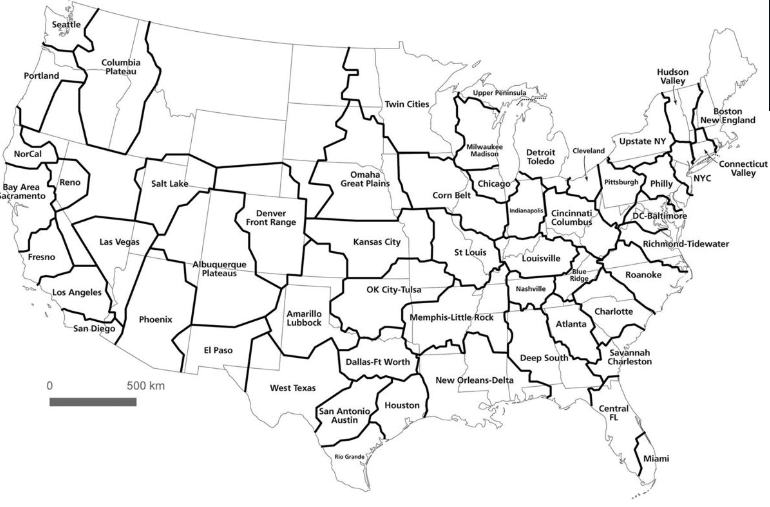
I’ve often cited a study that attempted to map regional economies. It showed that much of Virginia, from the Roanoke Valley east to Danville and beyond, is really more connected to North Carolina’s economy than it is the rest of Virginia’s. The Microporous announcement shows how that works. Youngkin bragged about beating North Carolina for the project. Out in the audience was a delegation from North Carolina, specifically from Eden, North Carolina. Why were about a dozen Eden government officials there? Eden has invested $9 million in the water and sewer lines that will service the Megasite. Those officials, too, got their turn for a photo op with the governor and the Microporous CEO and all the groundbreaking shovels.
What happens now that the election is over?
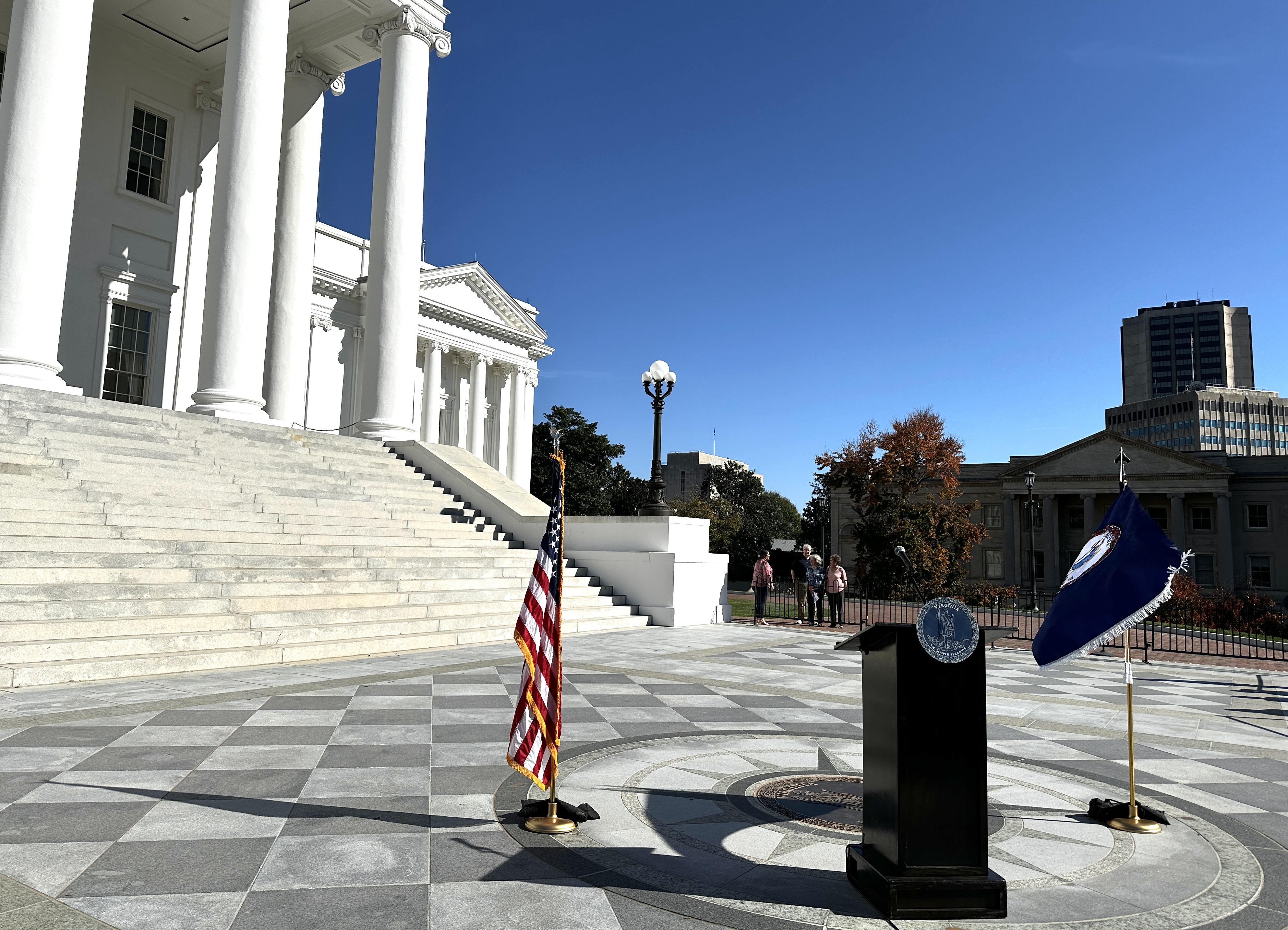
I write a weekly political newsletter, West of the Capital, that goes out on Friday afternoon. This week I’ll devote part of it to a look ahead in Virginia politics. You can sign up for that or any of our other free newsletters below:



